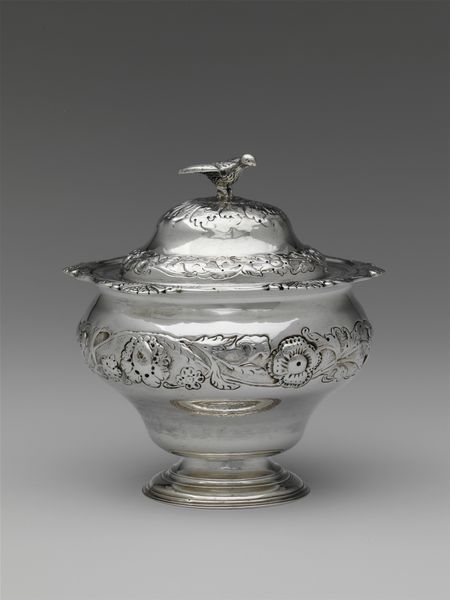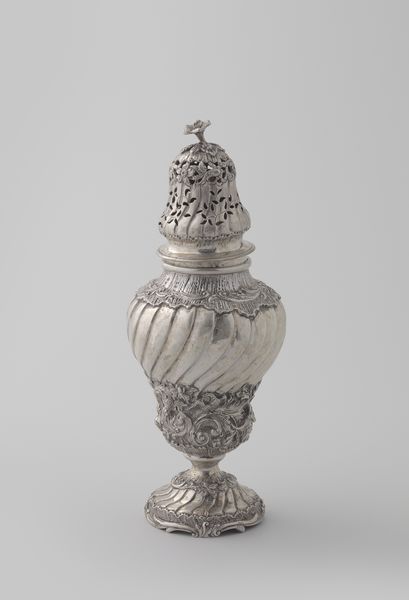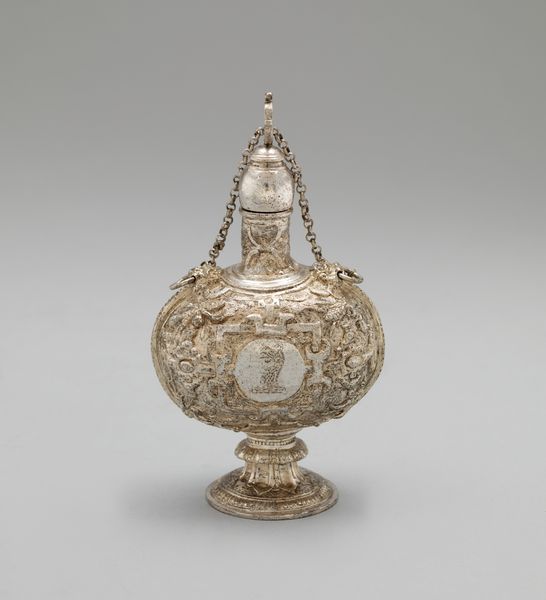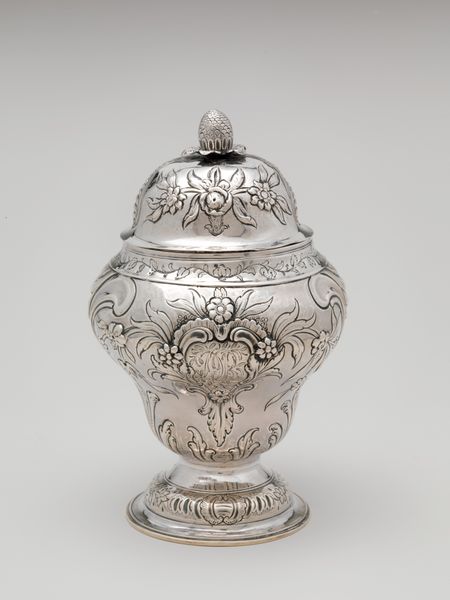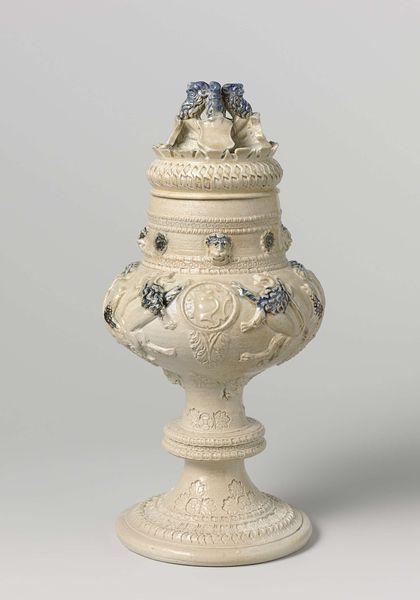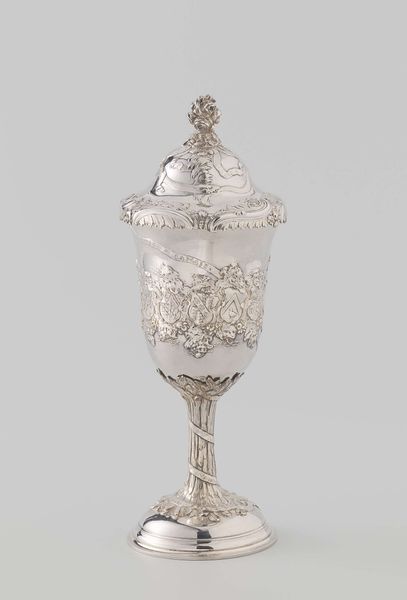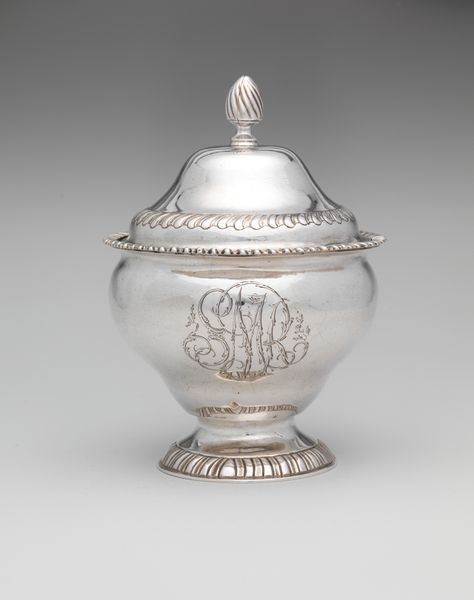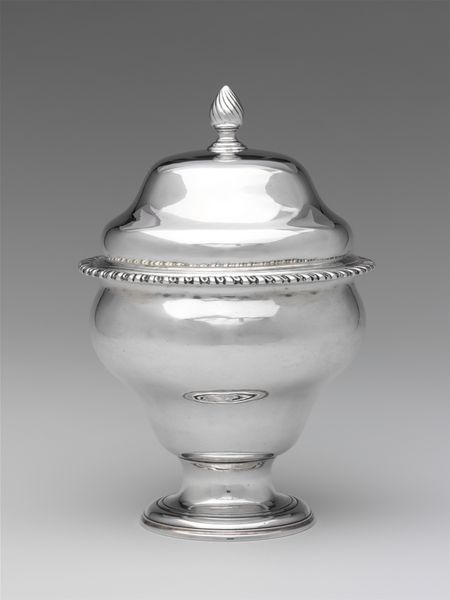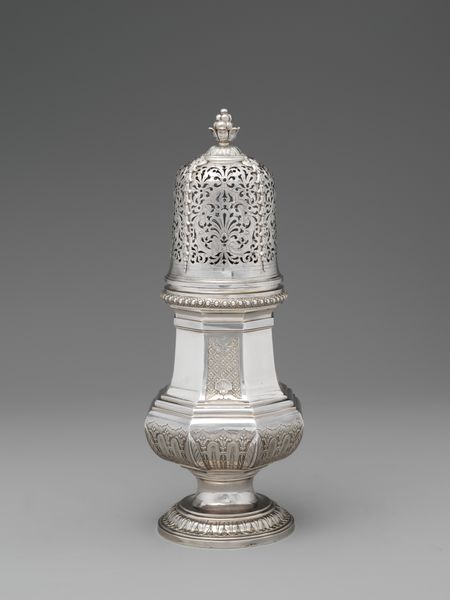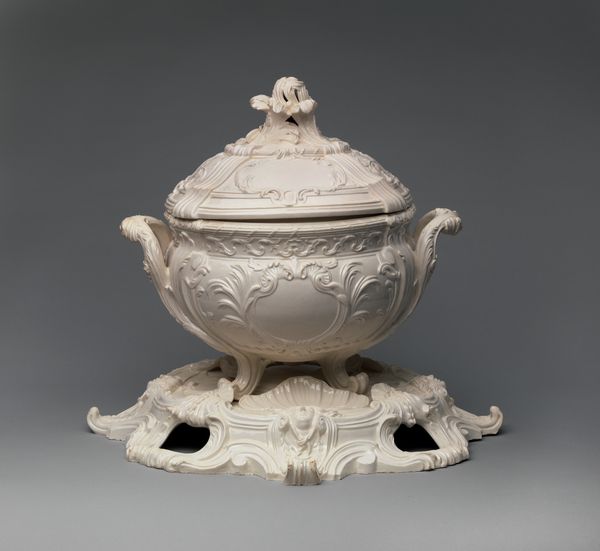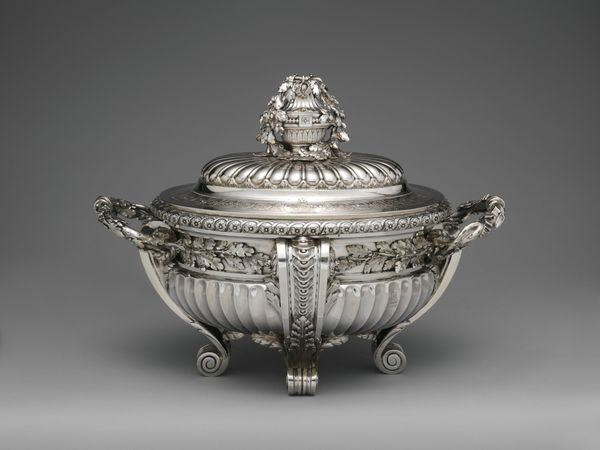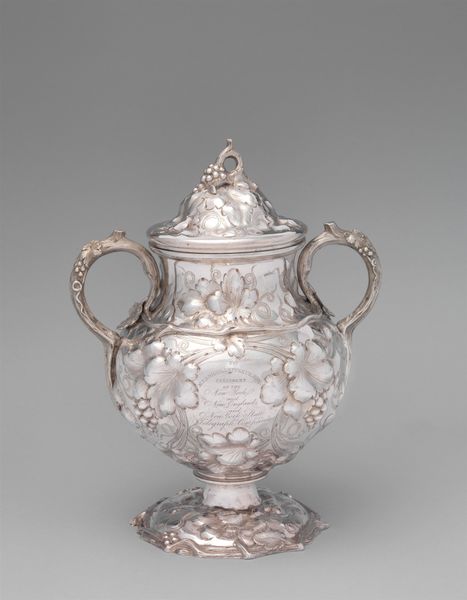
Dimensions: 18.4 × 11.1 × 11.4 cm (7 1/4 × 4 3/8 × 4 1/2 in.); 361.3 g
Copyright: Public Domain
Curator: Well, isn't that just precious? This "Covered Sugar Bowl," crafted from silver somewhere between 1765 and 1775. You can see it currently resides at The Art Institute of Chicago. Something about the sheer exuberance of it tickles me. Editor: The immediate impact is quite interesting. There's a tension here between the opulent, baroque flourishes and the knowledge that this vessel once held a commodity steeped in exploitation and colonial violence. Curator: Oh, aren't you a ray of sunshine! True enough, of course. But look at that floral relief. Isn't there something comforting, even innocent, about the delicate way those flowers climb across its surface? I feel a flutter of Spring air. Editor: It’s difficult to ignore the political economy entwined within what might seem like simple adornment. The sugar that it once contained connects it to global trade routes fueled by slavery and oppression. How can we reconcile such beauty with such an ugly history? Curator: I hear you, I really do. It's like finding out your favorite nursery rhyme has a terribly dark origin. But the craftsmanship! Look closely at the way the light catches the curves. Someone put real artistry into this. Almost, perhaps, in spite of it all. Maybe it represents, in its way, a desperate grab at beauty amidst brutality? Editor: It invites us to consider the domestic sphere as inherently political. Sugar was not just a simple luxury item but a marker of social status intricately woven into structures of power. How does this object solidify and maintain that power through the domestic space it occupies? Curator: Hmmm… I wonder about Bancroft Woodcock, who is currently listed as the creator in the credits. This level of ornate silverwork probably secured his standing as a renowned artisan of the era. I feel like understanding his story might add a deeper level of consideration here. Editor: Absolutely. Placing Woodcock within this network of power highlights the entanglement of individual artistry with systemic injustice. We need to question what choices he was afforded as an artisan producing pieces linked to colonialism. Curator: So, maybe this sugar bowl asks more questions than it answers, right? Editor: Precisely. It reminds us to confront the complicated legacies of beauty and violence embedded in our everyday objects. Curator: Okay, next time I'm having a sugar craving, I'm going to reflect a bit harder on all of that. Editor: Indeed. These are reminders to remain critically engaged with our past and present.
Comments
No comments
Be the first to comment and join the conversation on the ultimate creative platform.
